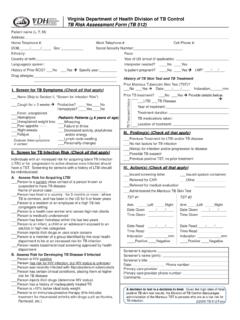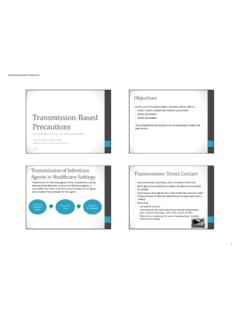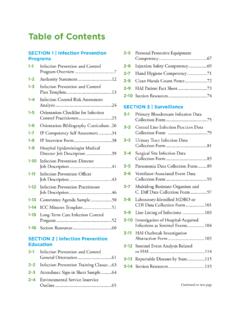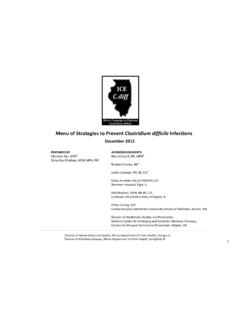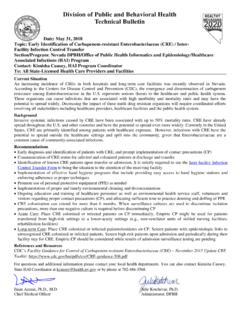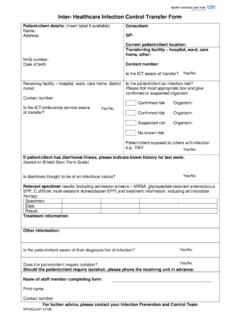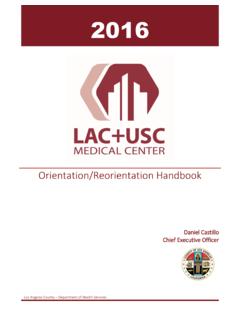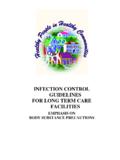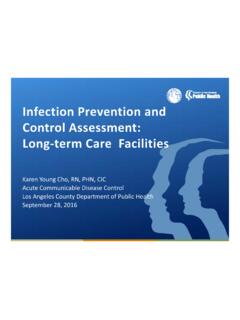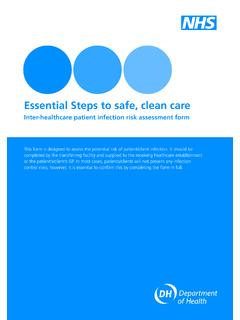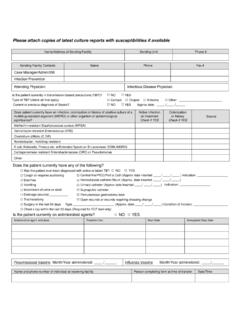Transcription of Assisted Living Facility and Nursing Home Infection ...
1 Assisted Living Facility and Nursing Home Infection prevention 2010 needs assessment report virginia department of health Division of Surveillance and Investigation Healthcare-Associated infections Program July 2012 Prepared by: Dana Burshell, MPH, CPH, CIC Healthcare-Associated infections Epidemiologist Andrea Alvarez, MPH Healthcare-Associated infections Program Coordinator 2 Table of Contents Executive Summary 3 Background 6 Methods 10 Results from Stand-Alone Assisted Living Facilities 12 Results from Facilities with Nursing Homes 30 Discussion and Recommendations 48 Use of needs assessment Results to Guide Training 53 Limitations 55 Conclusions 56 References 57 3 Executive Summary Background Healthcare-associated infections (HAIs) are a public health concern due to their prevalence, morbidity, mortality, and cost.
2 An extensive online needs assessment developed by the virginia department of health (VDH) HAI Program was sent to virginia Assisted Living facilities (ALFs) and Nursing homes (NHs) for the purpose of describing Facility demographics, Infection prevention -related policies and training, current HAI surveillance practices, frequency of different types of infections , education and training needs , inter - Facility communication, and relationship with the health department and the licensing agency. ALFs and NHs: Different models of care It is acknowledged that ALFs and NHs have different purposes, provide different services, have residents with varying levels of medical complexity, and are licensed and regulated separately. Because ALFs are centered around a social model and NHs are centered around a medical model, it was important to analyze the responses individually and to identify the different Infection prevention practices and needs in each type of setting.
3 Although both ALFs and NHs completed the same needs assessment , there was no expectation that the responses of the two types of facilities would be similar on all areas assessed. Methods and Limitations The needs assessment was disseminated electronically to NHs and ALFs in September 2010 . Results reported for ALFs were from facilities that were not part of a long-term care community setting that includes a Nursing home. Twenty responding facilities had both Assisted Living and Nursing home levels of care and were analyzed with the NH responses. Because the needs assessment s questions did not differentiate responses between the different levels of care, some of the results in the NH section may also reflect the Assisted Living level of care within the community. The response rates of 11% for Assisted Living facilities and 34% for Nursing homes greatly limit the ability to generalize the findings to all virginia ALF and NH facilities in these settings.
4 Additionally, it must be taken into consideration that some of the questions may have been misinterpreted or answered incorrectly. Although there were limitations, the needs assessment offered a deep glimpse into the Infection prevention educational needs and challenges in ALFs and NHs, creating an opportunity for the VDH HAI Program to develop a training curriculum and resources to address those needs . Demographics and clinical services able to be provided ALFs: The majority of ALFs identified themselves as for-profit and as independently or privately owned. Nearly all ALFs were able to provide blood glucose monitoring services and the majority of ALFs were able to provide wound care via their Facility staff or contractual staff. NHs: The majority of NHs identified themselves as for-profit and as part of a chain or corporation.
5 All NHs were able to provide glucose monitoring, wound care, and 24-hour on-site Nursing supervision. Greater than or equal to 90% of facilities were able to provide blood draws, urinary catheter management, and IV infusions for peripheral or central lines. 4 Facility policies ALFs: Nearly all ALFs had written policies addressing employee hand hygiene and standard precautions. Policy topics that had room for improvement were transmission-based precautions, blood glucose monitoring, addressing transfer of residents with infections to and from other facilities, and education of vendors/contractual staff and visitors regarding Infection risk-reduction behavior. NHs: Greater than or equal to 90% of facilities had written policies addressing all Infection prevention -related topics assessed with the exception of education of vendors or contractual staff regarding Infection risk-reduction behavior.
6 Main point of contact (POC) for Infection prevention -related issues ALFs: The majority of POCs had a Nursing degree; most were a licensed practical nurse and some were a registered nurse. Over one-fourth of ALF POCs were a non-clinician. NHs: The majority of POCs were a registered nurse. Infection prevention training ALFs: In approximately half of the ALFs, the POC provided Infection prevention trainings in the Facility . Facility compliance with providing Infection prevention training both upon employment and annually had room for improvement. Trainings addressing multidrug-resistant organisms and transmission-based precautions were least frequently provided. Respondents indicated that the POC may need the most training in outbreak/cluster identification and management in addition to the transfer of residents with infections to and from other facilities.
7 The top three preferred training formats were online self-study, webinar, and regional one-day meetings. NHs: In three-fourths of NHs, the POC provided Infection prevention trainings in the Facility . Facility compliance with providing Infection prevention training upon employment had room for improvement. Respondents identified that the POC may need the most training in outbreak/cluster identification and in how to educate vendors or contractual staff regarding Infection risk-reduction behavior. The top preferred training formats were regional one-day meetings and webinars. Tracking and recording Infection data ALFs: Non-catheter-associated urinary tract infections , influenza, non-ventilator-associated pneumonia, and norovirus were the most frequently occurring infections .
8 Only about half of ALFs indicated that Infection data were tracked and recorded. Of the facilities that tracked and recorded Infection data, three-fourths shared the data with Facility staff. NHs: Non-catheter-associated urinary tract infections , pneumonia, methicillin-resistant Staphylococcus aureus infections , and catheter-associated urinary tract infections were the most frequently occurring infections reported in NHs. All NHs tracked and recorded Infection data, and nearly all NHs shared their Infection data with Facility staff. 5 Vaccines ALFs: Although seasonal influenza immunization was both strongly encouraged for employees and residents, less than one-third of ALFs reported that many or most of the employees received the 2009 influenza vaccine. About three-fourths of ALFs strongly encouraged the pneumococcal vaccine for residents, and about three-fourths of ALFs strongly encouraged the hepatitis vaccine for employees.
9 NHs: Although seasonal influenza immunization was both strongly encouraged for employees and residents, only about one-half of NHs reported that many or most of the employees received the 2009 influenza vaccine. Nearly all ALFs strongly encouraged the pneumococcal vaccine for residents and the hepatitis B vaccine for employees. Communication ALFs and NHs: Nearly three-fourths indicated one or more barriers to communication of Infection information between facilities, with the foremost concern being the lack of resident information. Challenges and Perceptions ALFs: The top two Infection prevention challenges were Infection risk-reduction behavior compliance for visitors and providing sufficient Infection prevention education and training for staff. Half of respondents perceived HAI prevention as a challenge.
10 NHs: Nearly 90% of NHs reported one or more Infection prevention challenges. The top challenges were employee hand hygiene compliance, environmental cleaning compliance, and Infection risk-reduction behavior compliance for visitors. Conclusions Although there were some significant differences between ALFs and NHs regarding Infection prevention policies and practices, both Facility types have Infection prevention needs that can be addressed in part through trainings and the provision of resources customized for the long-term care setting. To address the Infection prevention POC educational needs identified in this assessment , the VDH HAI Program collaborated with its long-term care partners to develop a training curriculum and methodology for implementing a set of trainings for the ALF and NH audiences.
